Looking Back - The Cinematography of Raise the Red Lantern
‘Raise the Red Lantern’, is a meticulously framed, exquisitely beautiful and extremely claustrophobic film to watch. With its blend of formal compositions, static camera angles and daring color palettes, auteur filmmaker Zhang Yimou’s exploration of female oppression is simultaneously tender and detached.
About the film
Raise the Red Lantern (Dà Hóng Dēnglóng Gāogāo Guà, 1991) is a film by director Zhang Yimou set in 1920’s Northern China. Two separate cinematographers, Lun Yang and Zhao Fei, were given credit on the picture. It was nominated for an academy award for Best Foreign Language Film.
The film follows the plight of a 19 year old student Songlian (Gong Li) who, upon the death of her father and subsequent loss of financial means is forced to accept an arranged marriage. In spite of warnings from her mother that wedding a wealthy man will only lead her to become a concubine, Songlian opts to marry into the wealthy Chen family and thereby seals her fate as a prisoner in a gilded cage. She moves into the family’s compound, where she is surrounded by extreme wealth and opulent surroundings, but also quickly realizes she will be subject to a strict set of family traditions and customs which place her husband, the master, at the center of the universe of his 4 wives.

Songlian becomes simply the 4th mistress, finding herself - even on her ‘wedding’ night - in fierce competition with the other wives for The Master’s attentions and the accompanying privileges with which that entails: indulgences such as foot massages and the choice of the evening meal. The wife who currently enjoys his favor is honored by the lighting of red lanterns in and around her living quarters.

The film explores themes of female oppression and corrupt social hierarches. Though it was denied by the film’s director, Raise the Red Lantern was interpreted by many western reviewers as a veiled criticism of the communist party.

First impressions
Raise the Red Lantern is a meticulously framed, exquisitely beautiful and extremely claustrophobic film to watch.
It features highly formalized compositions, with the camera often placed statically dead center in the frame. This classical style mise en scène gives the film a theatrical feel, as if we are watching the scenes played out on an ornately decorated stage. It also creates an almost painful distance between the viewer and subject, with the walls and leading lines a constant reminder of Songlian’s encasement.
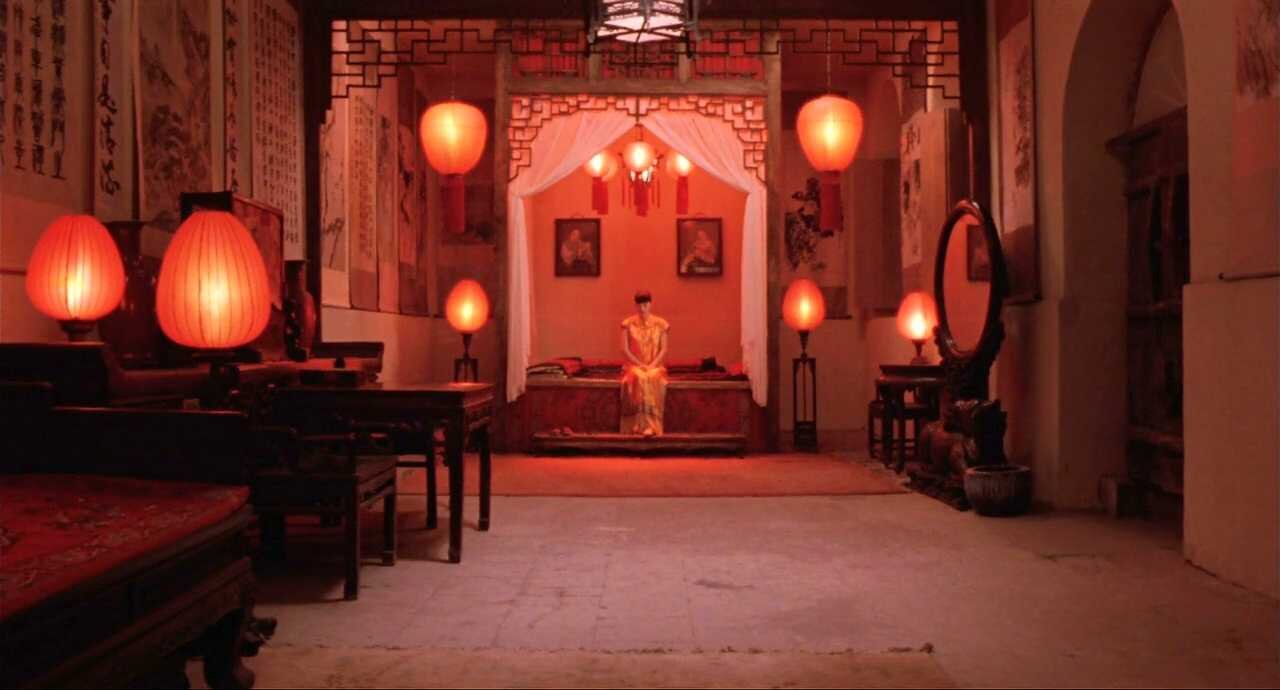
Everything about the visuals, including the lighting, composition, framing and color palette are rich and lush but also restrained. In spite of the obvious expansive size of the compound in which Songlian lives, it is clearly a compound, and there are a limited number of locations that we are shown - each with its own distinct visual treatment.
There are the living quarters of each of the women, opulent and expensively decorated, but also expansive and cold. Even in these beautifully settings the characters are isolated and the viewer if often kept visually at a distance. We are also aware of a static quality about the rooms; in spite of the ornate woodwork and rich tapestries we feel Songlian is somewhere dusty and asphyxiating.

Outside the living quarters there are the stone walled grounds of the compound. Again in spite of its grandness, it is clearly a prison. A maze of stone walls that Songlian is free to wander within but not beyond. We seldom gain a glimpse outside the walls.

When the pressure intensifies for Songlian we see her running up to the rooftops, but it provides her no escape, only a view of the chilling and mysterious stone chamber at the far corner of the compound walls, a grim reminder of the harsh penalty afforded those wives who transgress. Minor petulant rebellions are allowed - in fact they are almost encouraged on some level by The Master to fuel his amusement - but there is no doubt about the costs of breaking the rules.

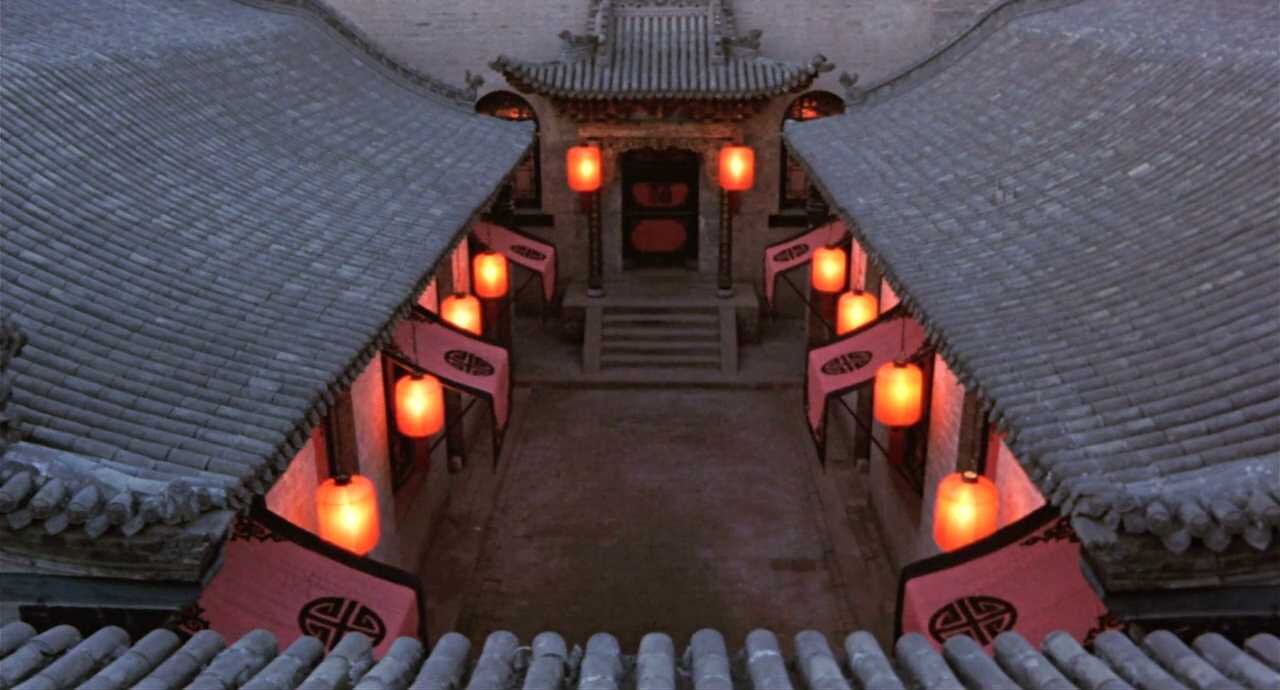
The only escape or respite from this visual prison is the patriarch. The light of the master is the complete and utter focus of the women, as symbolized by the red lanterns. To be in his favor is to be in light and warmth visually. To be out of the light is to literally have all color stripped from their environment.
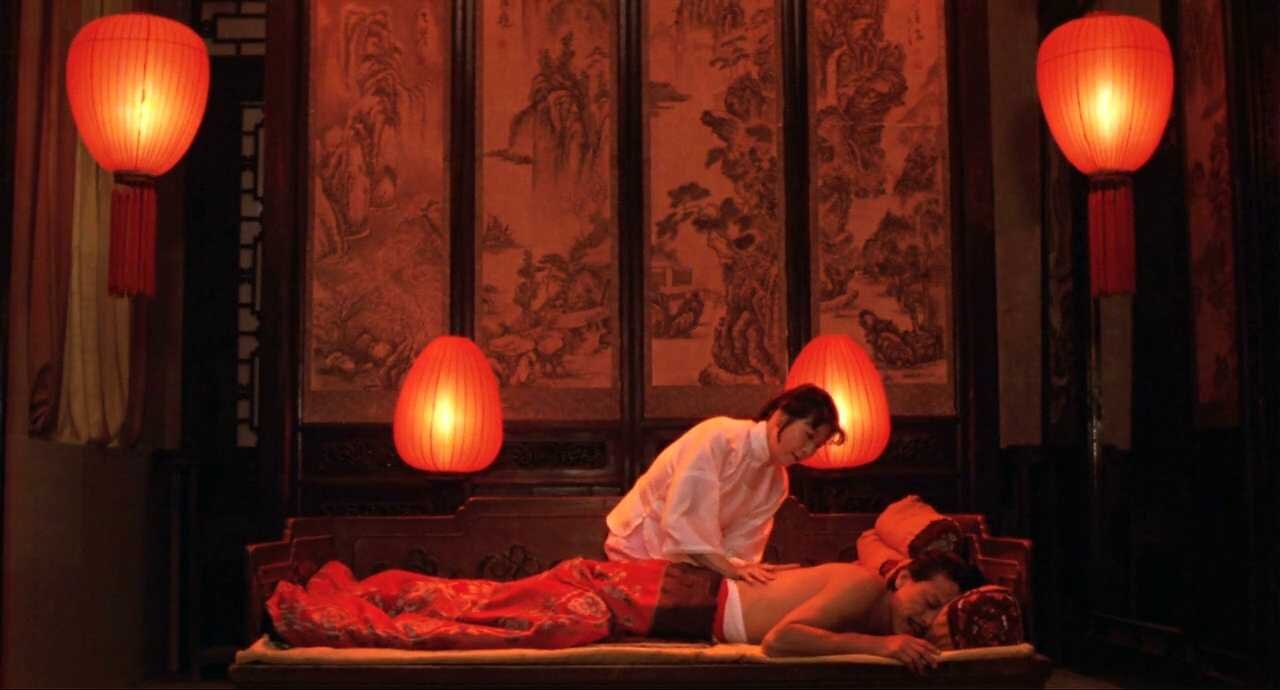
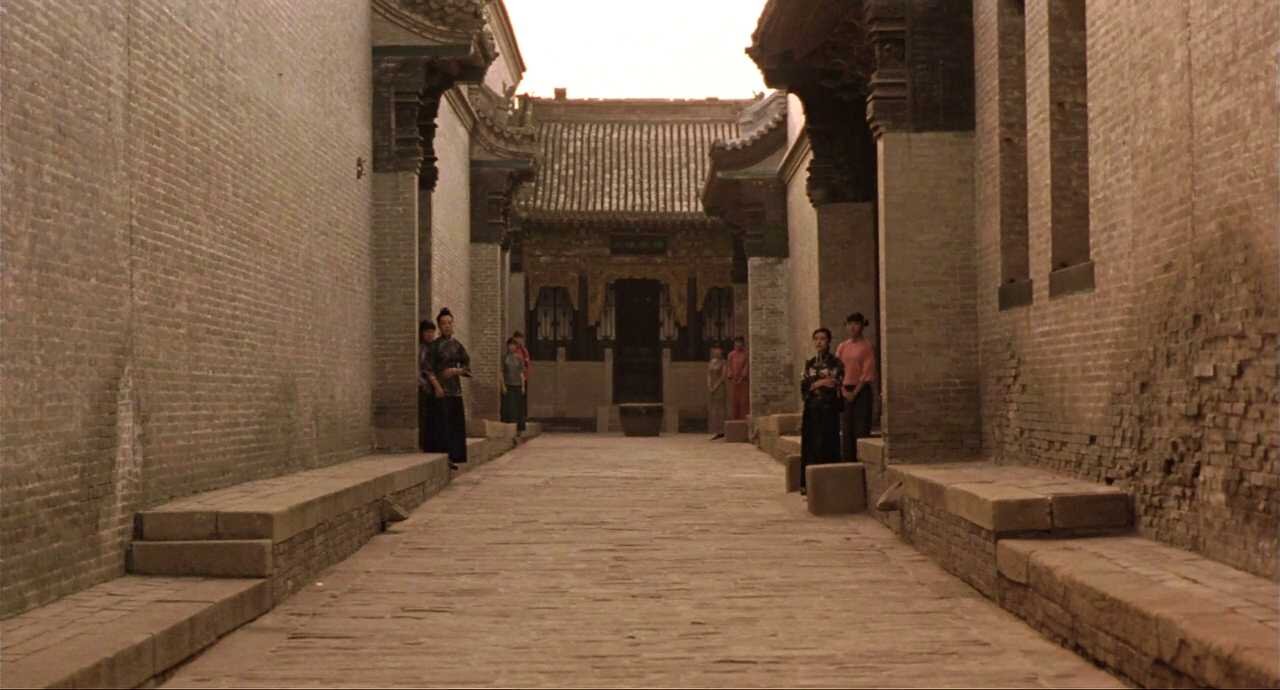
The psychological state of the main characters is emphasized by the physical space that surrounds them, and the almost cartoonish distance they must traverse to move from room to room. The film heavily utilizes framing: doorways, windows, beams, stone walls - all constantly surrounding the main characters emphasizing their feeling of entrapment.
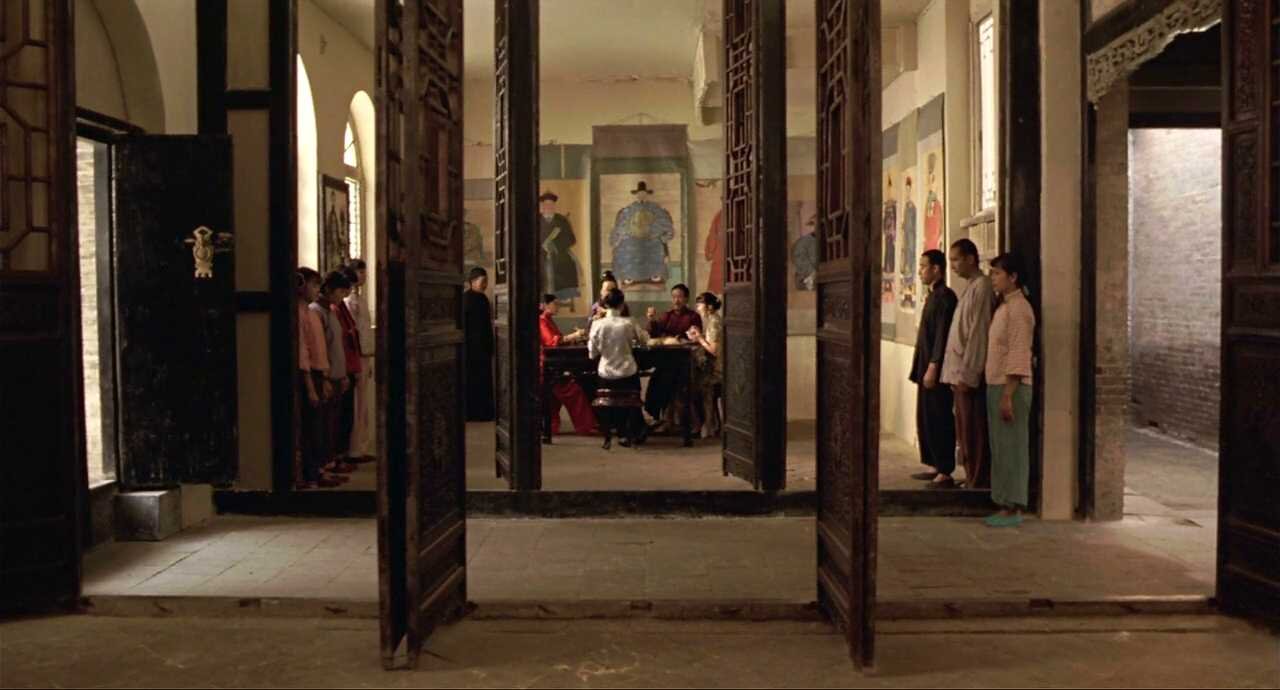
Interestingly, we are never shown the master directly. For much of the film he is completely occluded from view by silk sheets or shot in extreme long shot, so we can only barely make out his features. It is a visual device that is relentless, and as Songlian falls more and more from his favor we see even less of him.
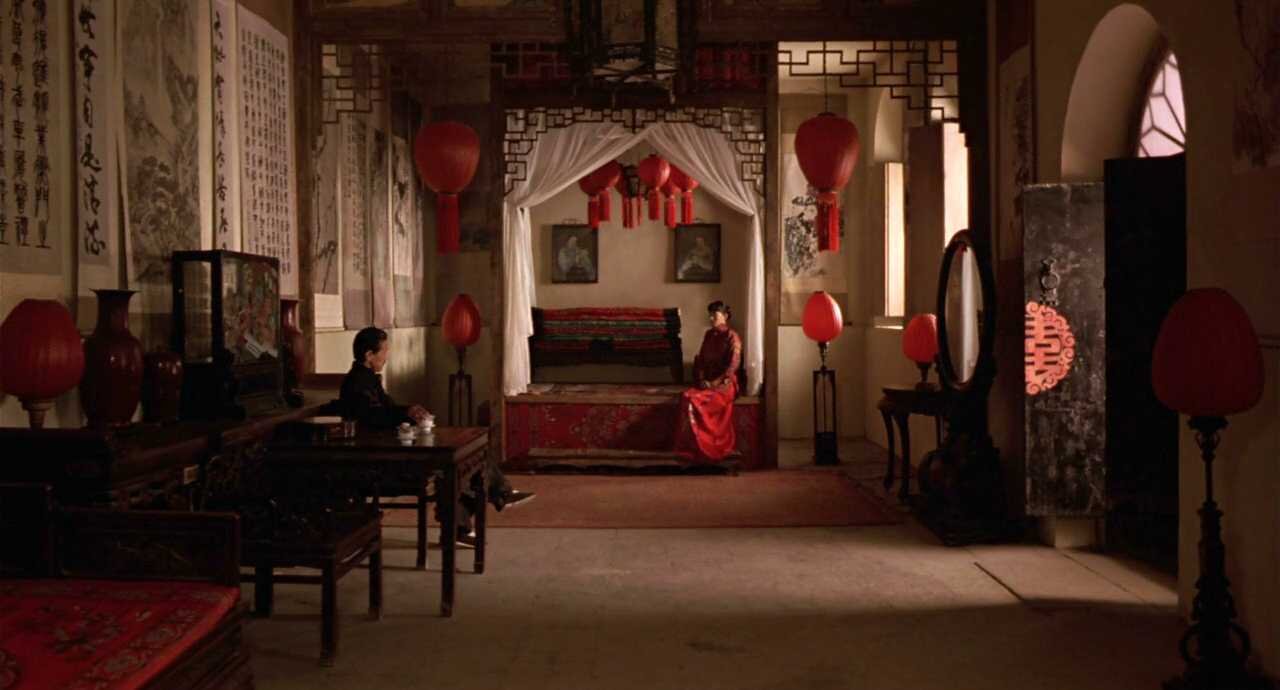
The camera is seldom allowed to even pan or tilt, again creating a sense of rigidity and reinforcing the message the film repeats throughout: the rules of the household go back generations.
About the cinematographers
Lun Yang and Zhao Fei are both listed as cinematographers on the film, though the ACS’s list of 100 greatest films by Cinematography gives the credit to Lun Yang.
There isn’t a lot written about these cinematographers or why both were given credit, so it’s difficult to say much about the respective roles or what stylistic contributions they made to the picture. That said, the film’s director Zhang Yimou had already established himself as a respected cinematographer having won acclaim at the 1985 Hong Kong Film festival for his photography on the film Yellow Earth with director He Qun. He menitons that it was not unusual for him to work with multiple cameramen on his films, whom he usually selected from classmates who he knew from film school. Yimou has a strongly defined visual style, so we can assume as an autuer director, he would have had a close hand in many of the stylistic choices in regards to the cinematography.

That said, Hou Yong, another one of Yimou’s cinematographers describes working with him as being a collaborative and democratic process:
The most important quality as a director, in my view, is to maintain effective communication in the team. I have had a cooperative relationship with a variety of directors, among them Zhang Yimou and Tian Zhuangzhuang are the best ones in terms of this. They are both easy-going and very democratic. They are always open to communication with other people in the film crew. In my view, I think, they are democratic directors, and are open to challenges. They encourage people to think differently, and present their own opinions. During the filming they would always discuss problems with the crew. Zhang is also open-minded, and feels free and direct to express his opinions. If he likes my viewpoint, he would say so directly. But, if he had different view, he would explain to me why he thinks that way. Then, we would decide which is better. His ideas are very enlightening. He is a good director and is not afraid to point out the problems. Besides, he is very patient in directing the actors, those with or without experience. He is very nice with children.
Yimou is a graduate of the Beijing Film Academy, and one of the pioneers of the so called Fifth Generation of Chinese filmmakers, a generation that grew up under the oppression of Mao’s cultural revolution (Yimou’s entrance into university was delayed by three years because he was sent to work in the countryside), but went on to help establish an underground wave of cinema in China that broke with many of the previous norms of heroism and social-realism, injecting elements of social commentary and subsequently gaining the appreciation of western audiences, but not always that of Chinese censors.
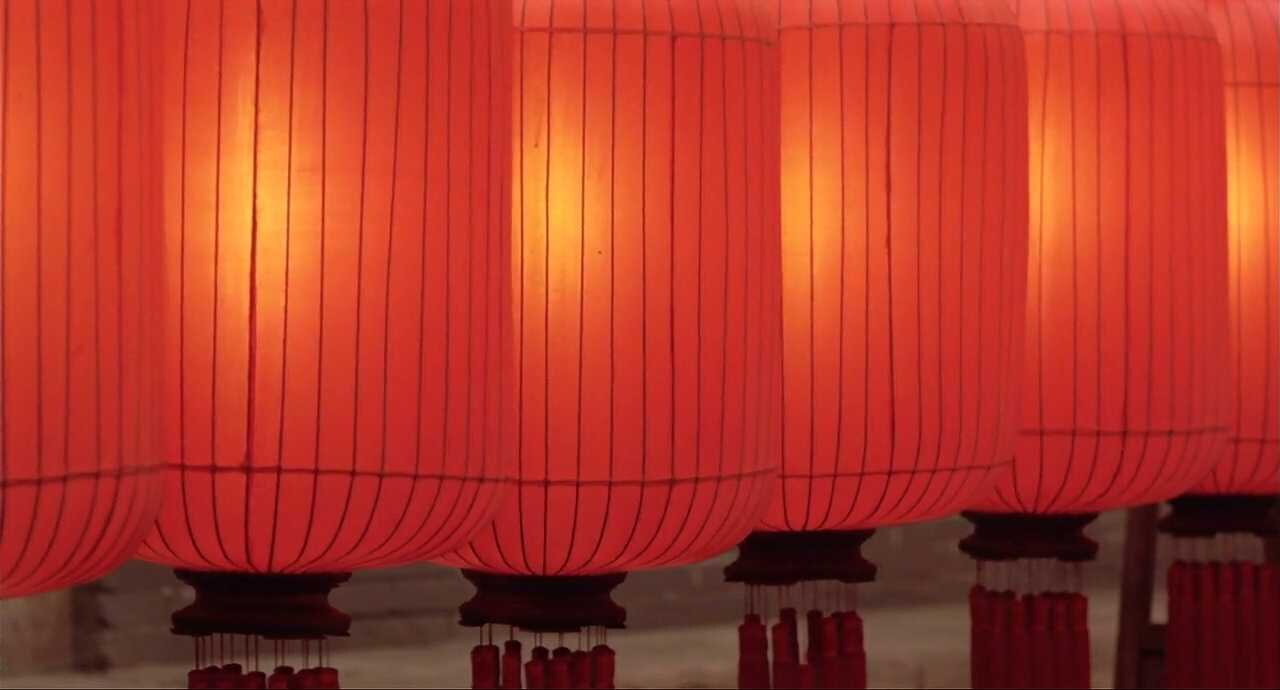
Stylistically they were known for bright color palettes and extensive use of long shots, which is clearly evident in Raise the Red Lantern. Yimou is particularly known for his use of the color red, a symbol in China for good luck, fortune and happiness. In raise the Red Lantern, the character’s access to the red lanterns, for me, seemed to literally represent the female protagonist’s access to life and joy.
In Yimou’s words:
The symbolic meaning of red in China is implicitly understood by everyone; it has recently been used to represent revolution, but how long has this revolution been in China? In China’s five thousand years of cultural tradition, the color red has simply represented hot passion, the approach the sun, burning fire, warm blood. I think that for all humankind, it has a kind of intense feeling. You could never say that it was cool, could you?
Yimou is also known for isolating his characters dead center in the frame, establishing their story through their relationship with their physical surroundings.
In Raise the Red Lantern, for example, much of what we learn about the Songlian’s state of mind is revealed through her physical placement in the scene, whether that is her walking through the austere compound or surrounded by the soft, warm ambience of the red lanterns in her personal living quarters.
A classically styled film
In terms of its cinematography, Raise the Red Lantern is largely classical, though it is also unconventional in some aspects.
From a western perspective, the cinematography is classical in its approach in so far as it explicitly supports the story of the main characters and the film’s central themes. There is very little in the shots that is there simply there for the sake of being pretty; all of the camera work and visual elements are carefully placed to serve the underlying narrative. The color palettes and lighting are carefully considered and restrained.
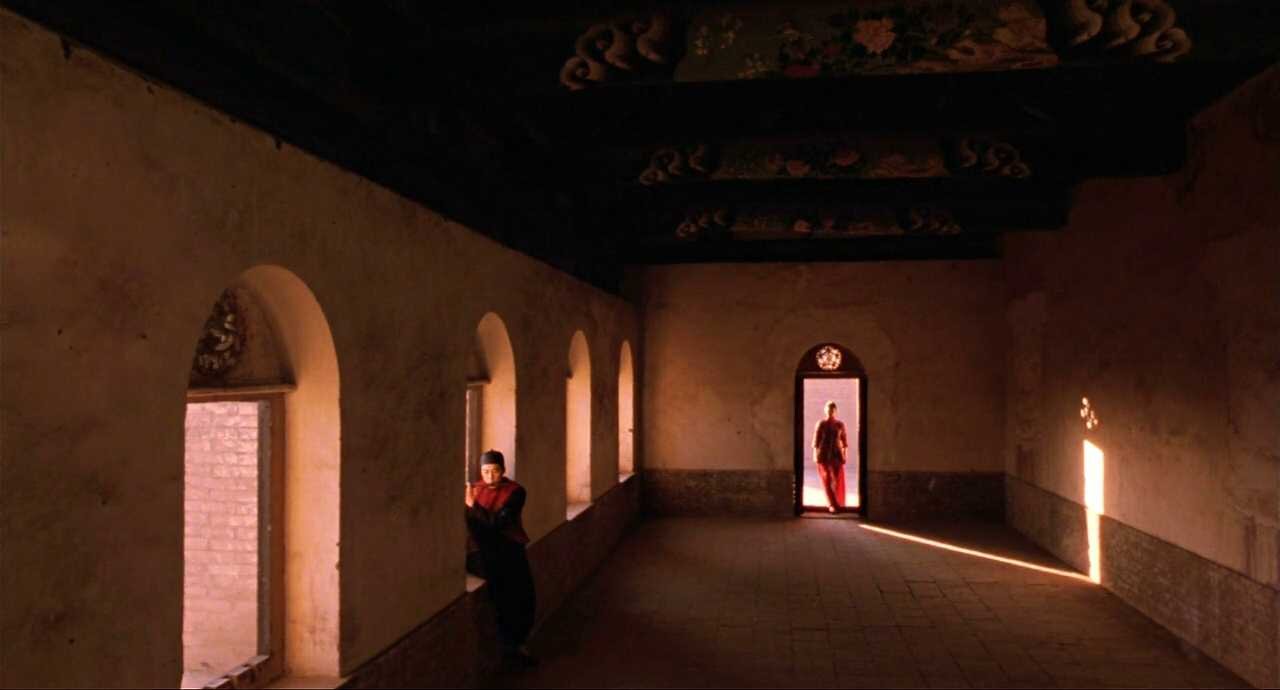
Likewise, the visual treatment and lighting of the the main character (played by the beautiful Gong Li) is largely glamourous. Even later in the film when she has gone mad - evidenced by a tussle of her hair - she is still portrayed attractively.
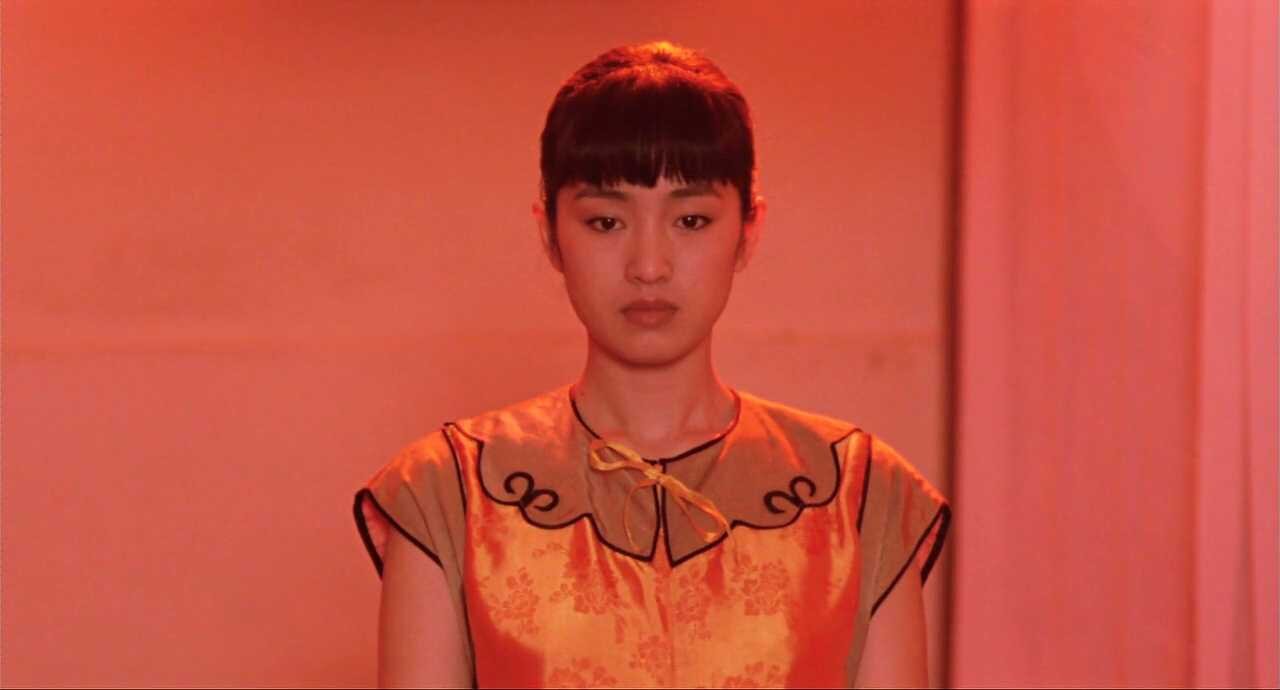

However, with its vibrant color palettes and emphasis on visually exploring a highly personal narrative, the film is also unconventional for the time and place with which it was released, with the prevailing emphasis in China on socialist realism and heroic documentary films.
Compared to many Hollywood films from the same era, with its formal compositions, emphasis on naturalistic lighting, and orthographic camera angles, Raise the Red Lantern stylistically contrasts with the prevailing Hollywood trends of neo-noir style chiaroscuro, dramatic back lighting, smoke effects other stylistic flourishes popularized by contemporary western directors such as Ridley Scott and James Cameron.
About the production
The film was produced at a time when restrictions on moviemaking were just beginning to ease in China, and it was partially financed in Hong Kong. Though it was criticized at the time by some in China for pandering too much to western tastes, Yimou himself makes the point that at the time the film was released he had almost no exposure to the west and was not allowed to attend the Academy Awards where the film had received a nomination. Although the film was initially approved by the state, it was initially censored, like other early films by the director.

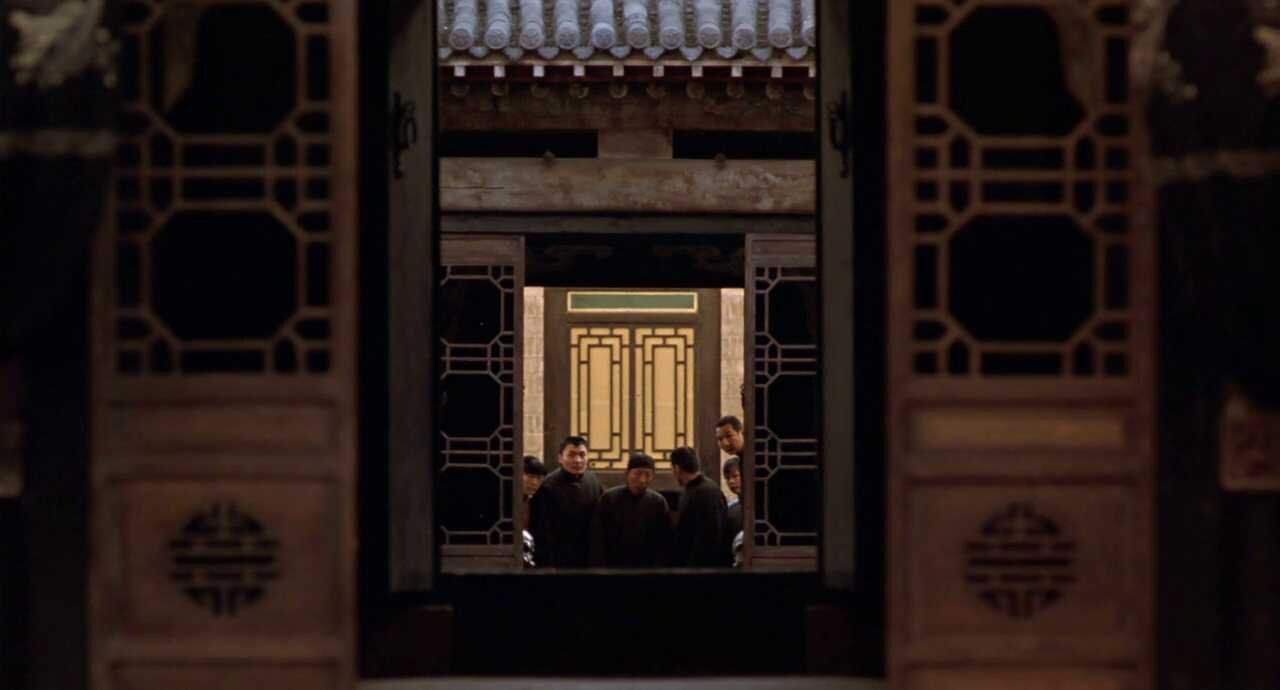
The actual filming location was at the Qiao Family Compound in Shanxi Province, North-Eastern China. It was a former home of wealthy merchant during the Republican period [1911-49] and had been occupied by himself and his four son’s and families, along with scores of servants.
Final thoughts
Raise the Red Lantern provides a beautiful example of visual storytelling by exploring the relationships between characters and their environments. It uses restrained but stunningly beautiful lighting, color, and framing to convey the emotional and psychological state of the film’s protagonist. Combining formal elegance with biting social commentary, it is a must-see on any photographer or cinematographer’s list.
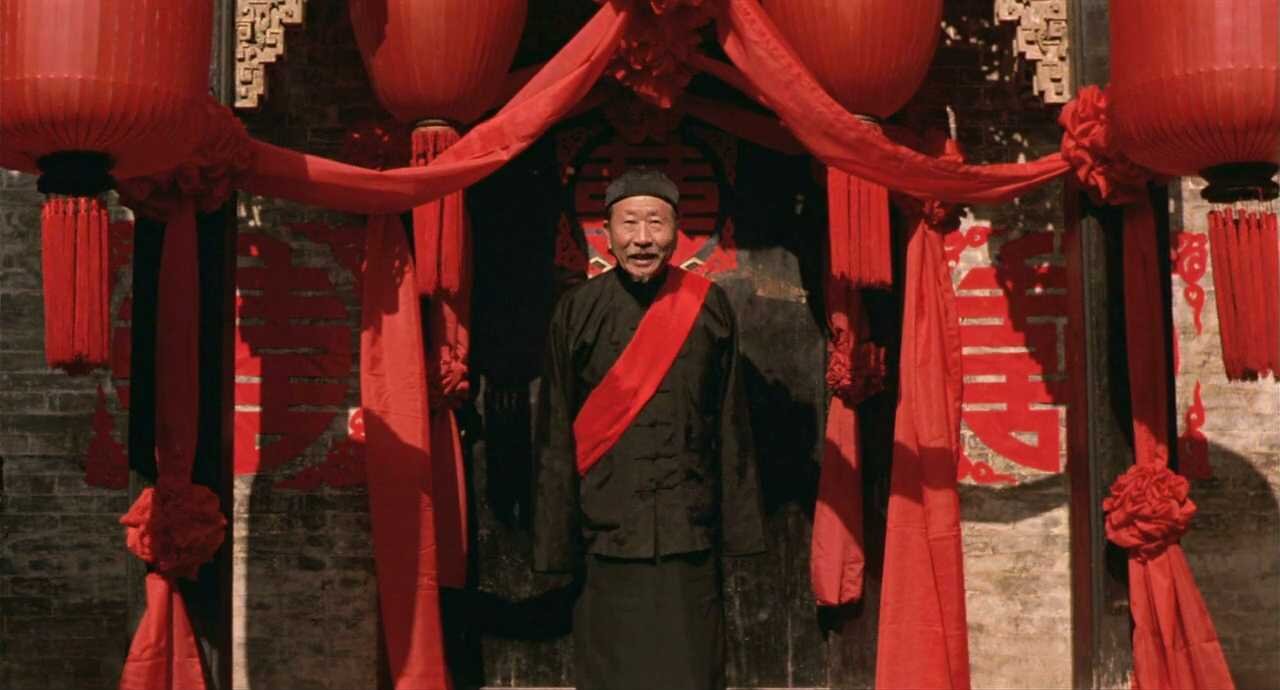
Takeaway assignment
Suggested photography expercises inspired by the film…
One of the signature features of Raise the Red Lantern is its use of the extreme long shot, framing the subject character dead in the center, and using the visual surroundings to tell the story of the subject’s emotional state.

As an exercise, try creating a shot or sequence using this style of framing. Think about leading lines and where the eye is being drawn to, and also about what the texture, color and compositional elements surrounding the subject convey about the narrative and their inner state of mind.
References
Gateward, Frances. Zhang Yimou Interviews. University Press of Mississippi, 2001.
Lim and Ward The Chinese Cinema Book. A BFI book published by Palgrave Macmillan, 2011
Shaw, Tristian 5 influential movies from the Fifth Generation of Chinese filmmakers - SupChina(website) https://supchina.com/2018/10/05/film-friday-fifth-generation-of-chinese-filmmakers/
Fade to Black Zhao Fei, Cinematographer, Creative Network Planet (website), https://www.creativeplanetnetwork.com/news-features/fade-black-zhao-fei-cinematographer-371070
Wu, Cythia Interview Hou Yong : Zhang Yimou’s Cinematographer, Offscreen.com (website) https://offscreen.com/view/hou_yong
Matheson, Kristy. Zhang Yimou and the Fifth Generation Filmmakers ACMI (website) https://2015.acmi.net.au/acmi-channel/2015/epic-intimacy/
The Chinese cinema industry: China’s cultural revolution. The Independent (Newspaper website) https://www.independent.co.uk/news/world/asia/the-chinese-cinema-industry-chinas-cultural-revolution-6112577.html
Malcom, Derek Zhang Yimou: Raise the Red Lantern The Guardian Newspaper. https://www.theguardian.com/world/2000/mar/30/derekmalcolmscenturyoffilm.china7

